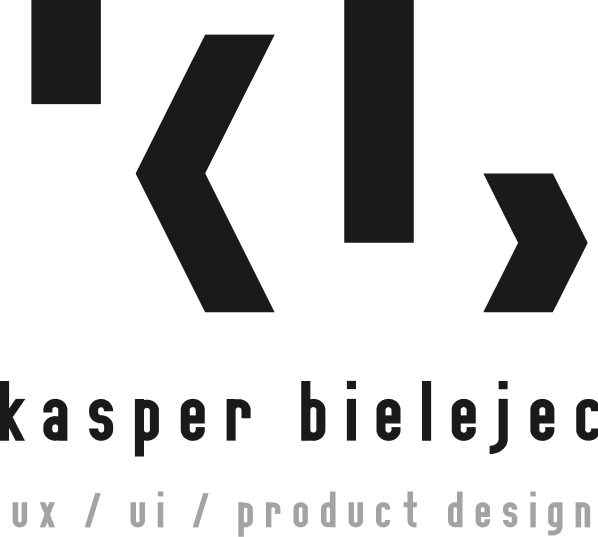Summary
As UX Design Manager, I led a comprehensive redesign of Listonic's promotional flyers feature that transformed user engagement and business performance. Through systematic research, strategic design decisions, and cross-functional team leadership, we achieved 147.94% growth in user engagement and 41.67% improvement in monetization. This case study demonstrates how user-centered design methodology can directly impact strategic business metrics in a mobile shopping application used by millions of users.
Mission
Listonic's promotional flyers feature was underperforming with low user adoption and engagement. As the UX Design Manager leading a 3-person design team, I was tasked with identifying the root causes of poor feature performance and implementing strategic improvements that would drive both user engagement and business value. The challenge was to transform a feature that 65% of users had never used into a valuable part of the shopping experience.
My Contributions
I orchestrated the entire redesign process from research strategy to implementation oversight. I designed and executed a comprehensive research program, led strategic design decisions, and managed cross-functional collaboration to ensure successful implementation. My role encompassed user research leadership, design strategy, team management, and stakeholder alignment throughout the project lifecycle.
🚀 Impact
The redesign produced exceptional results across key metrics:
User Engagement Transformation
• 147.94% increase in total users
• 97.69% improvement in week 1 retention (3.86% → 7.64%)
• 60.32% growth in days 2-7 retention (5.96% → 9.56%)
Platform-Specific Performance
• Android: 203.17% user growth, 115.92% retention improvement
• iOS: 50.64% user growth, 67.43% retention improvement
Monetization Success
• 41.67% increase in page views per month and ad revenue potential
STEP 1: Research Strategy & Execution
Discovery
I began by conducting a comprehensive audit of the existing promotional flyers feature to understand its current state and identify problems and improvement opportunities. The analysis revealed significant usability issues and low feature adoption, requiring a data-driven approach to understand user needs and barriers.
Research Planning
I developed a multi-phase research strategy combining quantitative and qualitative methods:
Phase 1: Large-Scale Quantitative Research
• Designed and deployed an in-app survey system reaching 4,600+ users
• Created dynamic survey flows with conditional logic
• Implemented recruitment cards integrated directly into the app interface
• Conducted cross-correlation analysis of responses to identify user segments
Phase 2: In-Depth Qualitative Research
• Recruited participants through database analysis and cold email campaigns
• Developed 4 different recruitment email strategies based on psychological principles
• Created comprehensive IDI interview scenarios
• Analyzed 9 in-depth interviews to understand user behaviors and motivations
Phase 3: Behavioral Analysis
• Implemented Clarity session recordings analysis
• Analyzed user interaction patterns with the existing feature
Key Research Findings
Quantitative Insights (4,600+ users):
• 65% of users never used promotional flyers in Listonic
• 54% wanted integration with store loyalty programs
• 46% rated promotion timeliness as the most important feature
• 80%+ found product search functionality crucial
Qualitative Insights (9 IDI interviews):
• Users plan shopping immediately before store visits, not in advance
• 2-3 regular stores chosen by convenience, plus 1 specialty store
• Low awareness of existing features despite their potential value
Behavioral Analysis:
• Users plan shopping immediately before store visits, not in advance
• Complex navigation paths prevented feature discovery
• Monetization areas were not prominently positioned
STEP 2: Competitive Analysis & Strategy
Benchmarking
We conducted comprehensive competitive analysis of solutions mentioned by users in our research, including Blix (the most popular competitor), store-specific apps, and other promotional platforms. This analysis revealed key competitive advantages and additionally informed our feature prioritization using MoSCoW methodology.
Strategic Direction
Based on research findings, I established core design principles:
• Simplification: Reduce cognitive load by streamlining navigation paths
• Personalization: Focus on user's preferred stores and products
• Discoverability: Improve feature visibility and adoption
• Monetization Optimization: Better positioning of revenue-generating content
STEP 3: Design & Implementation Leadership
Design Process
I led rapid iterative design sessions with my team, ensuring early stakeholder involvement:
• Cross-team collaboration: Regular sessions with iOS/Android and backend developers
• Business alignment: Continuous engagement with monetization team
• Corridor testing: Quick iteration cycles based on tests and feedback
Key Design Decision
Main View Simplification:
• Reduced navigation complexity to decrease cognitive overload
• Directed user attention toward primary monetization areas
• Implemented clear visual hierarchy for promotional content
Store Preference Integration:
• Emphasized popular store selection to improve personalization
• Unified flyer browsing experience
Enhanced User Experience:
• Streamlined product addition workflow
• Improved promotional content presentation
• Better integration with existing shopping list functionality
Implementation Oversight
I managed the handoff process and ensured design consistency throughout development:
• Created detailed implementation specifications
• Conducted regular design QA sessions
• Maintained close collaboration with development teams
• Monitored implementation against design requirements
STEP 4: Results Analysis & Optimization
Performance Monitoring
I established comprehensive metrics tracking to measure the impact of our redesign:
• Engagement metrics: User adoption, retention, and session duration
• Monetization metrics: Ad impressions, revenue per user, and conversion rates
• User satisfaction: Through follow-up surveys and behavioral analysis
Strategic Impact
The redesign successfully addressed the core business challenge:
• Transformed a failing feature into a high-engagement user experience
• Created sustainable monetization improvements with 41.67% revenue increase
• Demonstrated clear ROI for user experience investment
Continuous Improvement
Based on the results, I developed recommendations for future optimization:
• iOS-specific enhancements: Leveraging the 70.24% growth potential
• Feature Discoverability enhancing actions like In-App Messaging
• Monetization refinement: Testing ad frequency optimization while maintaining UX quality
Conclusion
This case study demonstrates how strategic UX leadership can transform underperforming features into business success stories. Through comprehensive research, user-centered design, and cross-functional collaboration, we achieved improvements in both user engagement and business metrics. The 147.94% increase in user engagement and 41.67% improvement in monetization showcase the direct impact of strategic UX design on business outcomes.
